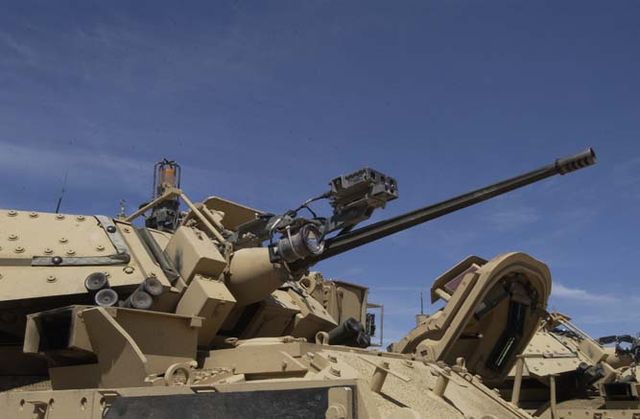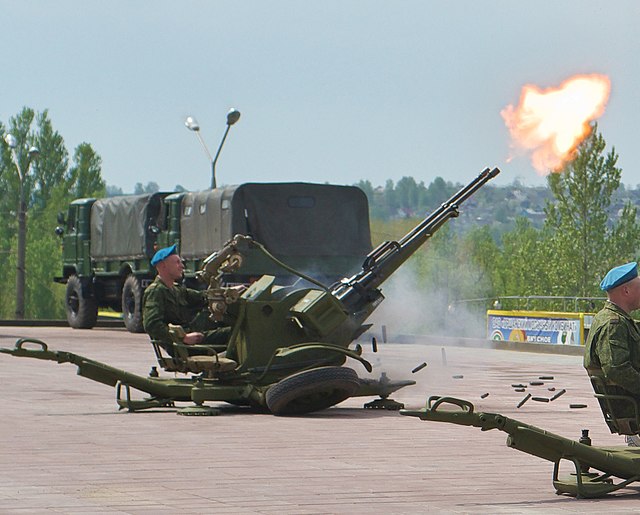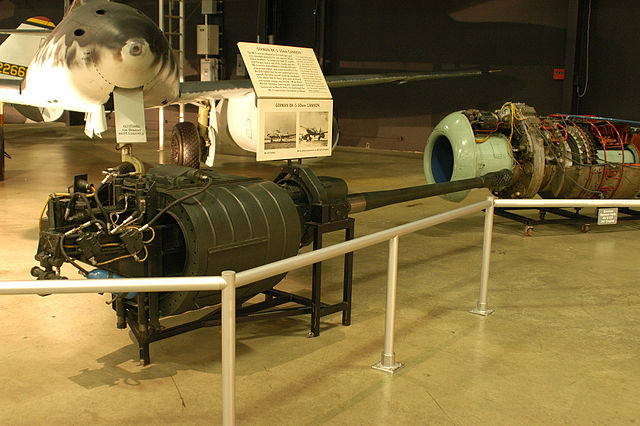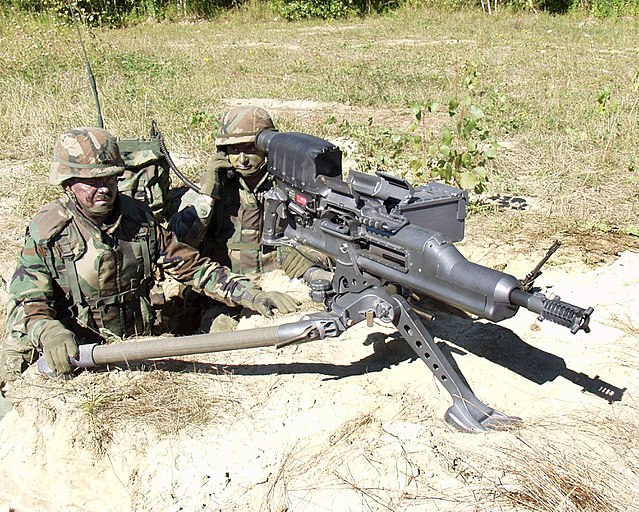The Oerlikon 20 mm cannon is a series of autocannons based on an original German Becker Type M2 20 mm cannon design that appeared very early in World War I. It was widely produced by Oerlikon Contraves and others, with various models employed by both Allied and Axis forces during World War II. Many versions of the cannon are still used today.
Oerlikon 20 mm cannon in French service
A Royal Navy Oerlikon gunner at his gun mount aboard the Dido-class cruiser HMS Dido in 1942
Diagrams showing basic design and color-coding of British HE/incendiary, tracer and HE/incendiary/tracer shells for the 20 mm Oerlikon gun
1945, a row of 20 mm Oerlikon guns aboard the Essex-class aircraft carrier USS Hornet
An autocannon, automatic cannon or machine cannon is a fully automatic gun that is capable of rapid-firing large-caliber armour-piercing, explosive or incendiary shells, as opposed to the smaller-caliber kinetic projectiles (bullets) fired by a machine gun. Autocannons have a longer effective range and greater terminal performance than machine guns, due to the use of larger/heavier munitions, but are usually smaller than tank guns, howitzers, field guns, or other artillery. When used on its own, the word "autocannon" typically indicates a non-rotary weapon with a single barrel. When multiple rotating barrels are involved, such a weapon is referred to as a "rotary autocannon" or occasionally "rotary cannon", for short.
US M242 Bushmaster 25 mm autocannon mounted on an M2 Bradley armoured fighting vehicle
ZU-23-2, a twin barrel 23×152 mm anti-aircraft autocannon from the 1960s still in service with some former members of the Warsaw Pact
German BK 5 50 mm aircraft autocannon displayed in front of the Me 262A jet, a design once tested with it
XM307 25 mm caliber man portable Automatic Grenade Launcher, part of the cancelled OCSW program








